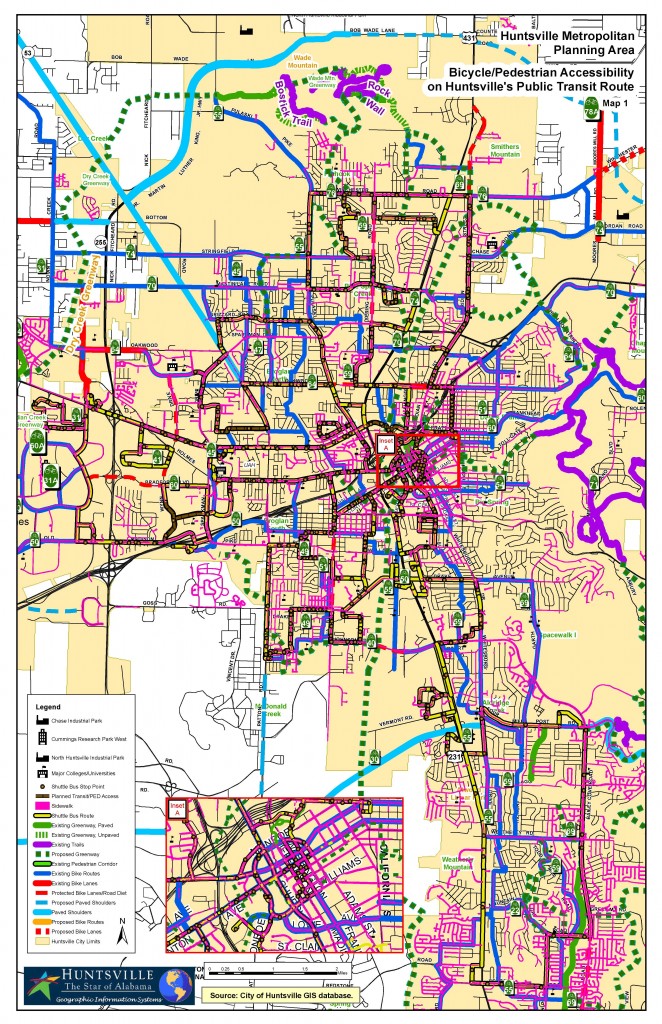CONGESTION MANAGEMENT AND MITIGATION
Increasing traffic congestion is one of the greatest challenges facing the Huntsville Urbanized Area. It results in motorist frustration, the loss of productivity, and the deterioration of air quality. Better management of the transportation system will help the region to address these growing problems as limited transportation resources struggle to meet rising travel demands.
The Huntsville Urbanized Area has been designated as a Transportation Management Area (TMA) by the Federal Highway Administration and the Federal Transit Administration (UZA 2010 population 286,692, Federal Register July 18, 2012). This designation requires the MPO to develop and maintain a comprehensive congestion management process. As a result, a detailed congestion management analysis has been performed which specifies current and future congestion problems on the network, and identifies various strategies to correct system deficiencies.
While Congestion Management documents have been incorporated into the Year 2040 Transportation Plan, a brief overview of congestion on the transportation network is provided here. For more detailed information, refer to Section 8 and Appendix
F of the Year 2040 Transportation Plan.
STRATEGIES TO ALLEVIATE TRAFFIC CONGESTION
One of the planning factors identified in federal regulations that must be considered in the transportation planning process is “to promote efficient system management and operations” [23 CFR 450.306(b)(7)]. The legislation specifically requires that the metropolitan transportation plan, or long range plan, include not only capital intensive road widening projects, but management and operations strategies as well. These management and operations strategies are highlighted as an important component in mitigating congestion in addition to increasing safety and security of the transportation network.
In addition to increasing roadway capacity, there are two other major categories of congestion mitigation strategies: Transportation System Management and Operations (TSMO) and Travel Demand Management (TDM). The TSMO approach to congestion management seeks to identify improvements to new and existing facilities that are operational in nature. These techniques are designed to improve traffic flow through better management of existing facilities. The TDM approach to congestion management focuses on user demand and behavior modification strategies to reduce drive-alone and peak-period travel.
Examples of TSMO Strategies – What Government Can Do
- Intersection and signalization improvements on collector and arterial streets
- Intelligent Transportation Systems (ITS) including, but not limited to, the integrated and coordinated operations of incident management, emergency management, and advanced traffic signal and traveler information.
Examples of TDM Strategies – What You Can Do
- Ridesharing, which helps to encourage carpooling, vanpooling, and transit usage
- Bicycling and walking, especially for commuting trips
The City of Huntsville encourages the use of various modes of transportation for trips in the area. The Huntsville Shuttle bus has mounted bike racks on their buses. The City is continuing its encouragement of alternate modes of transportation, and is constructing bus shelters, constructing and repairing sidewalk facilities, and taking part in bike safety campaigns as well as the construction of complete streets.
An overall map showing Huntsville transit routes, bike facilities, and sidewalks is available. Additionally, an interactive map is available at: https://maps.huntsvilleal.gov/. From this link, you can turn on layers from the Layer List, that can be found by clicking on the “More” icon on the upper right hand corner of the page. The layers to be selected are:
- Bike Routes
- Huntsville Shuttle Bus
The sidewalks are on by default and will show up the closer you zoom in.
The Huntsville Shuttle System Map is available at https://maps.huntsvilleal.gov/PublicTransit/
The links open PDF maps of the Routes with their schedules.

